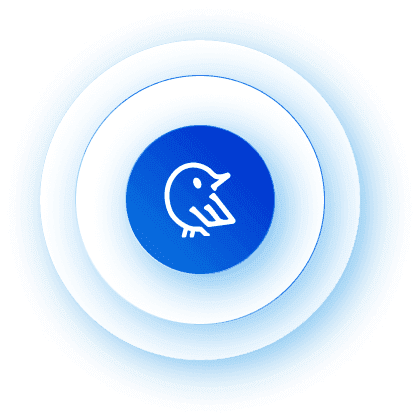Conversational BI Empowering Self-Service Analytics with Wren AI’s GenBI
Self-service analytics has reshaped business intelligence (BI) by enabling non-technical users — marketers, customer success managers, executives, and operations teams — to explore data independently, without relying on data experts.

Allison Hsieh
Updated: Oct 07, 2025
Published: Jul 18, 2025
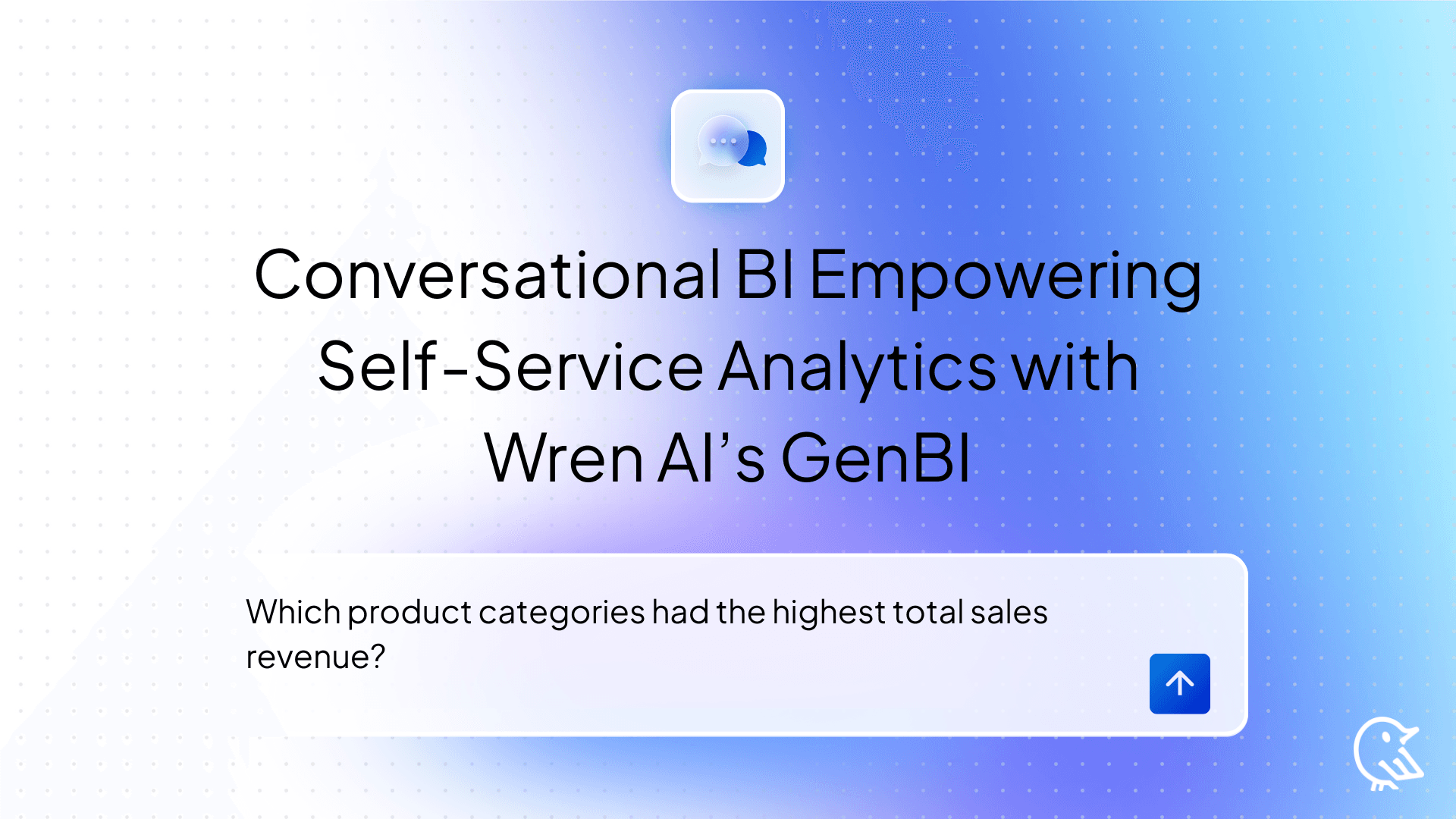
Yet, as data volumes soar and attention spans dwindle, traditional self-service tools often fall short, constrained by complex dashboards and rigid report structures.
Conversational BI is revolutionizing this space, making data as intuitive as a chat with a colleague. Wren AI’s GenBI platform leads this transformation, uniquely bridging the accessibility of self-service analytics, the conversational ease of a chatbot, and the power of an AI agent to deliver instant, actionable insights tailored to diverse personas.
Which days of the week had the highest footfall?
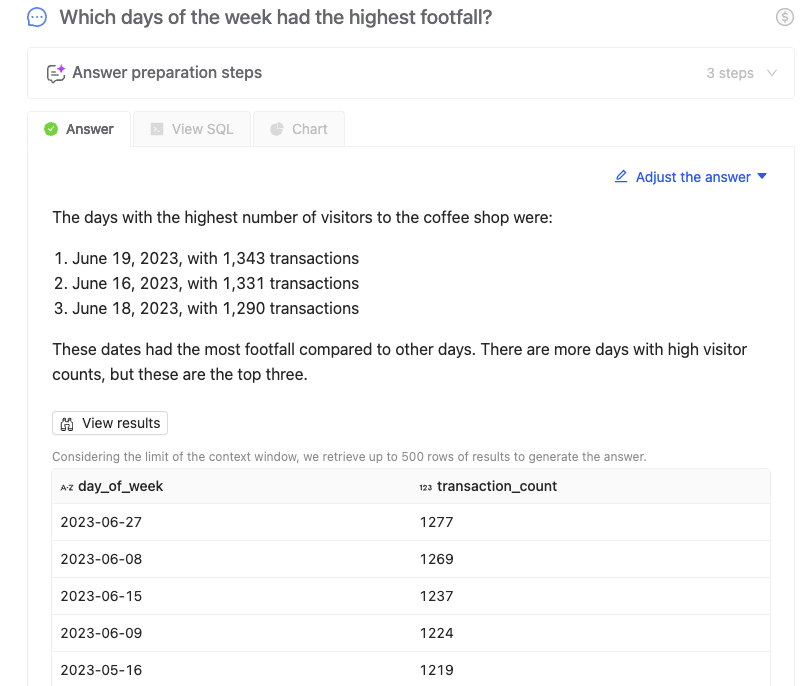
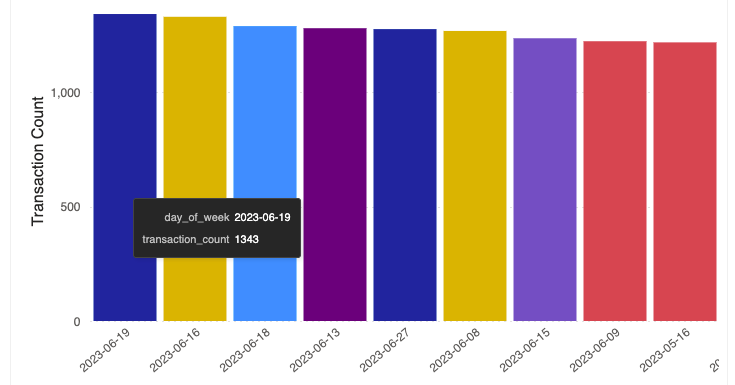
This article explores the transformative potential of self-service analytics, its impact on key roles, and how Wren AI’s GenBI redefines the BI ecosystem.
The Power of Self-Service Analytics
Self-service analytics empowers users to access, analyze, and visualize data without technical expertise, fostering a data-driven culture. By consolidating dashboards, reports, and metrics into user-friendly hubs, these platforms democratize insights. Key benefits include:
- Empowerment: Users can answer questions like “What drove last quarter’s sales?” without SQL or coding skills.
- Speed: Instant insights eliminate delays from data team requests.
- Data Literacy: Promotes data-driven decisions over intuition.
- Cost Efficiency: Reduces reliance on specialized analysts for routine queries.
However, traditional self-service analytics faces challenges:
- Complex Navigation: Dashboards can overwhelm users, requiring training.
- Limited Flexibility: Pre-built reports restrict ad-hoc data exploration.
- Setup Overhead: Data teams must prepare schemas or dashboards upfront.
- Data Quality Risks: Without robust governance, users risk misinterpreting data.
Conversational BI addresses these hurdles, making self-service analytics intuitive and dynamic. Wren AI’s GenBI bridges the gap by combining the accessibility of self-service platforms, the conversational simplicity of chatbots, and the analytical depth of AI agents, enabling users to ask questions in plain English and receive tailored insights instantly.
Exploring Self-Service Analytics in Action
Self-service analytics supports a range of business questions, particularly for retail or product-driven organizations. Here are practical use cases across key areas:
Sales & Product Performance:
Which product categories had the highest total sales revenue?
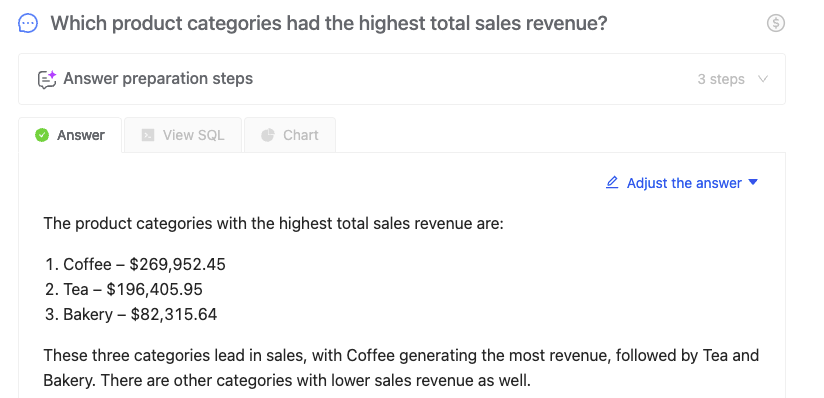
Geographic Analysis:
Which store location had the highest average transaction size?
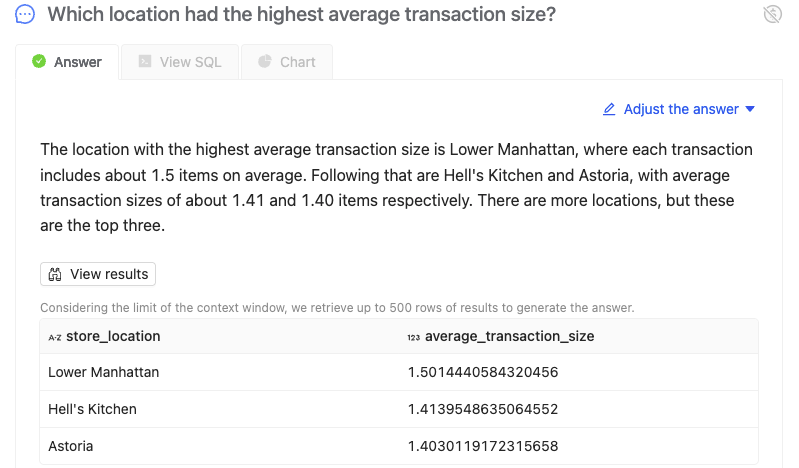
How does product preference (e.g., tea vs. coffee) vary by stores?
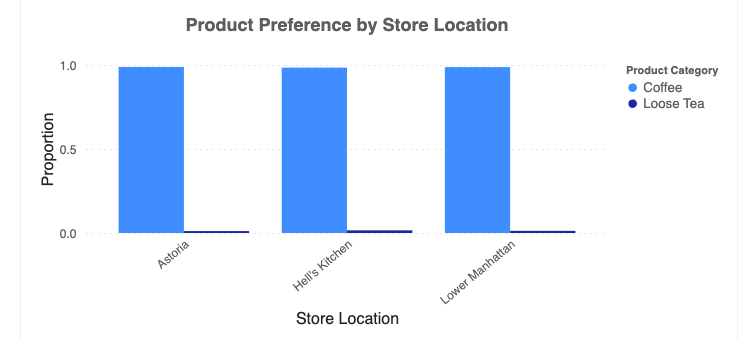
Time-Based Insights:
What were the sales trends by month ?
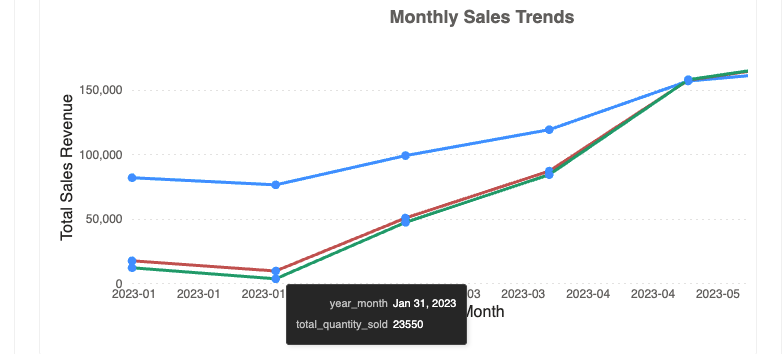

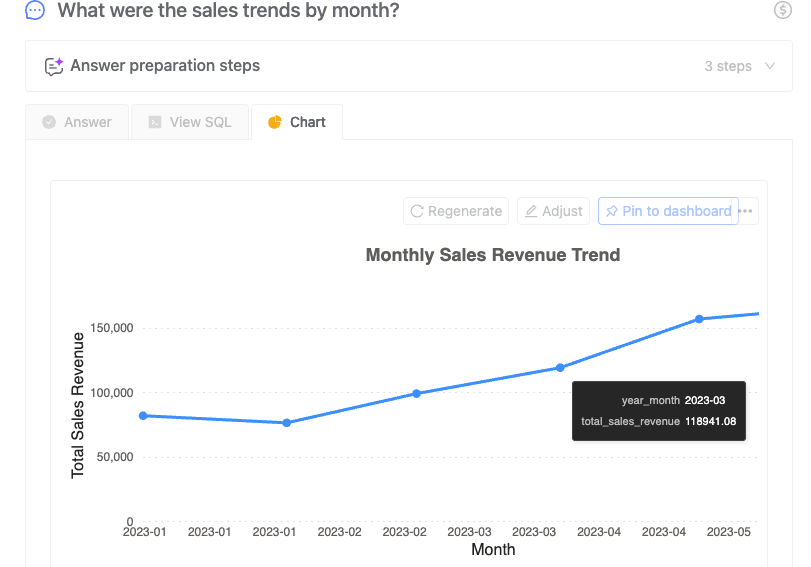
Comparison & Growth:
Compare revenue from coffee vs. tea in Q1?
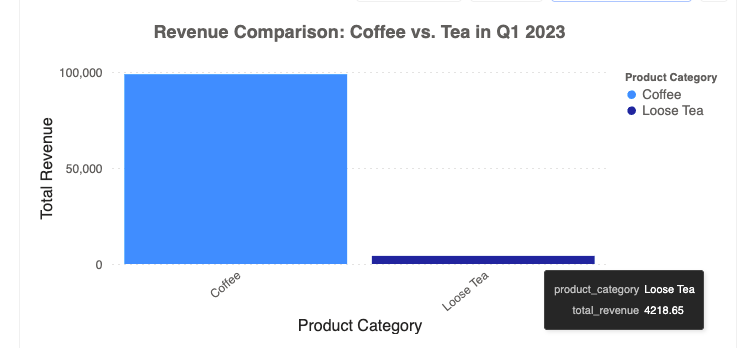
Operational Metrics:
What was the average revenue per transaction?

How many distinct products are sold in each category? What are they?
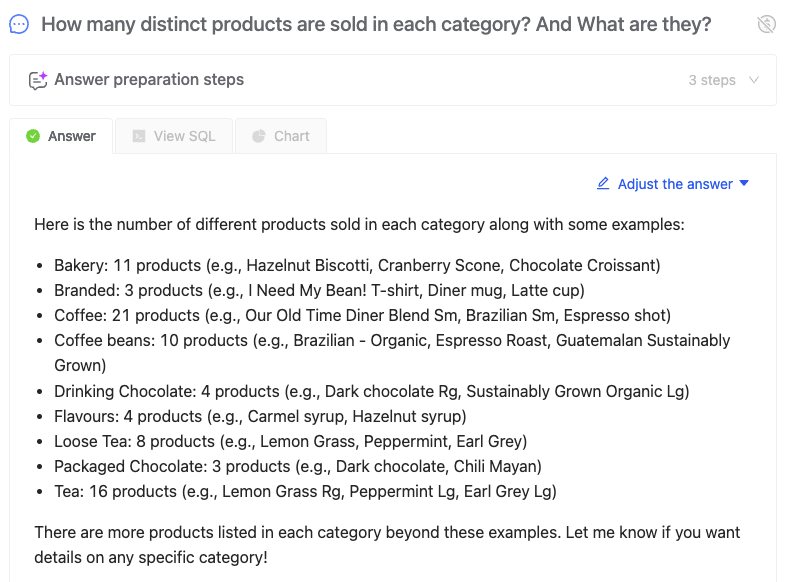
Traditional self-service tools often require pre-built reports for such questions. Wren AI’s GenBI enables users to ask these directly, generating SQL and visualizations instantly, making it a powerful tool for dynamic exploration across personas.
Wren AI’s Role in Self-Service Analytics
Wren AI’s GenBI redefines self-service analytics by seamlessly integrating the strengths of self-service platforms, chatbots, and AI agents. It overcomes dashboard-centric limitations by enabling raw data exploration, serving as a linchpin for personas like marketers, customer success managers, and executives. Key features include:
1. Conversational Queries:
Ask, can you refine with revenue as factor of peak sales hours, and list all 3 stores peak sales hours
and GenBI’s Text-to-SQL generates precise SQL queries, delivering answers without technical expertise.
2. Context-Aware Insights:
The Modeling Definition Language (MDL) encodes business logic, ensuring results align with organizational context, surpassing static filters.
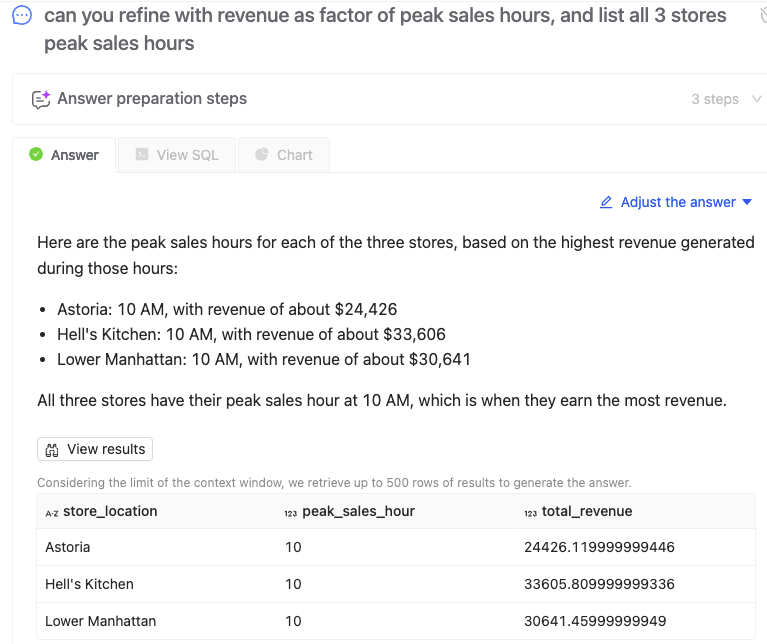
3. Instant Visualizations:
Transforms query results into interactive charts and dashboards, tailored for marketing campaigns, client POCs, or executive reports.
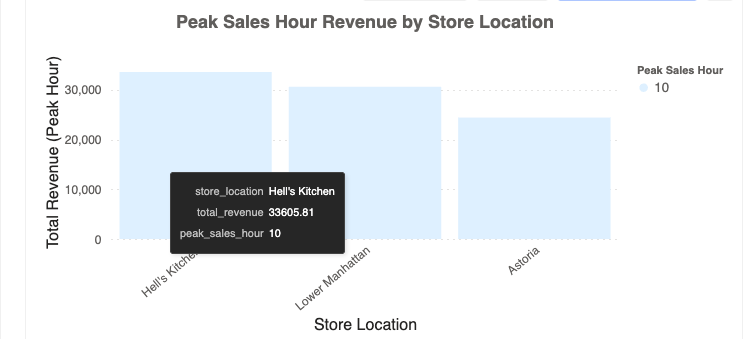
4. Seamless Integration:
Connects to data warehouses like Snowflake, BigQuery, and Postgres for smooth adoption.
5. Client POC Support:
Enables customer success teams to prototype dashboards rapidly during POCs, delivering tailored client insights.
6. Open-Source Flexibility:
Available under AGPL-3.0 or via Wren AI Cloud, with APIs for custom workflows, ideal for developer personas.
By merging accessibility, conversational simplicity, and analytical depth, GenBI empowers every persona to act like a data analyst, answering complex questions like “Which store sold the most coffee in Q1?” with ease.
Wren AI in the AI-Driven BI Landscape
Wren AI’s GenBI stands out among AI-driven BI tools enhancing self-service analytics, offering a unique blend of conversational capabilities and customization:
- Cloud-Based BI Tools: These prioritize natural language search and curated analytics for enterprise governance. GenBI’s open-source model and MDL-driven SQL precision offer more flexibility for ad-hoc queries and POCs.
- Embedded Analytics Platforms: Focused on integrating analytics into apps, they prioritize seamless experiences. GenBI’s broader database support and APIs excel in internal BI and real-time exploration.
- Business System Integration Tools: These target CRM/ERP integrations. GenBI’s real-time queries and open-source nature support broader, developer-led analytics.
- Open-Source AI Frameworks: These offer customizable data solutions but lack GenBI’s purpose-built BI interface and semantic engine for self-service analytics.
GenBI’s open-source accessibility, context-aware querying, and POC support make it a leader for persona-driven, conversational BI.
Use Cases: Where Wren AI Excels
- Routine Queries: Chatbots handle basic lookups like “What’s today’s revenue?” but lack analytical depth.
- Structured BI Needs: Traditional self-service analytics suits curated dashboards for executives or marketers.
- Dynamic Analytics and POCs: GenBI shines for ad-hoc queries (e.g., “Which products showed the highest growth in Q1?”) and client-facing POC dashboards.
Fostering a Data-Literate Culture
Wren AI’s GenBI makes data a natural part of decision-making, closing the gap between questions and answers for all personas. It scales data specialists’ impact, empowering users to explore confidently. By bridging self-service analytics, chatbot simplicity, and AI agent power, GenBI fosters a culture where data is a collaborator, sparking innovation across teams.
The Future: Self-Service Analytics Meets Conversational AI
The future of BI lies in blending self-service analytics with conversational AI. Traditional platforms provide structure, but AI agents like Wren AI’s GenBI unlock limitless data exploration for marketers, customer success managers, and executives. Compared to other BI tools, GenBI’s open-source flexibility, MDL-driven precision, and POC support make it a standout. As trends like embedded analytics and governance grow, GenBI positions self-service analytics as accessible and powerful for every role.
Ready to transform your BI workflow? Wren AI’s GenBI — open-source, cloud-ready, and built for scale — lets you chat with data, generate insights, and support client POCs effortlessly. 👉 Try Wren AI GenBI today at getwren.ai.
Talk to your data. Build smarter.
Supercharge Your
Data with AI Today
Join thousands of data teams already using Wren AI to make data-driven decisions faster and more efficiently.
Start Free TrialRelated Posts
Related Posts
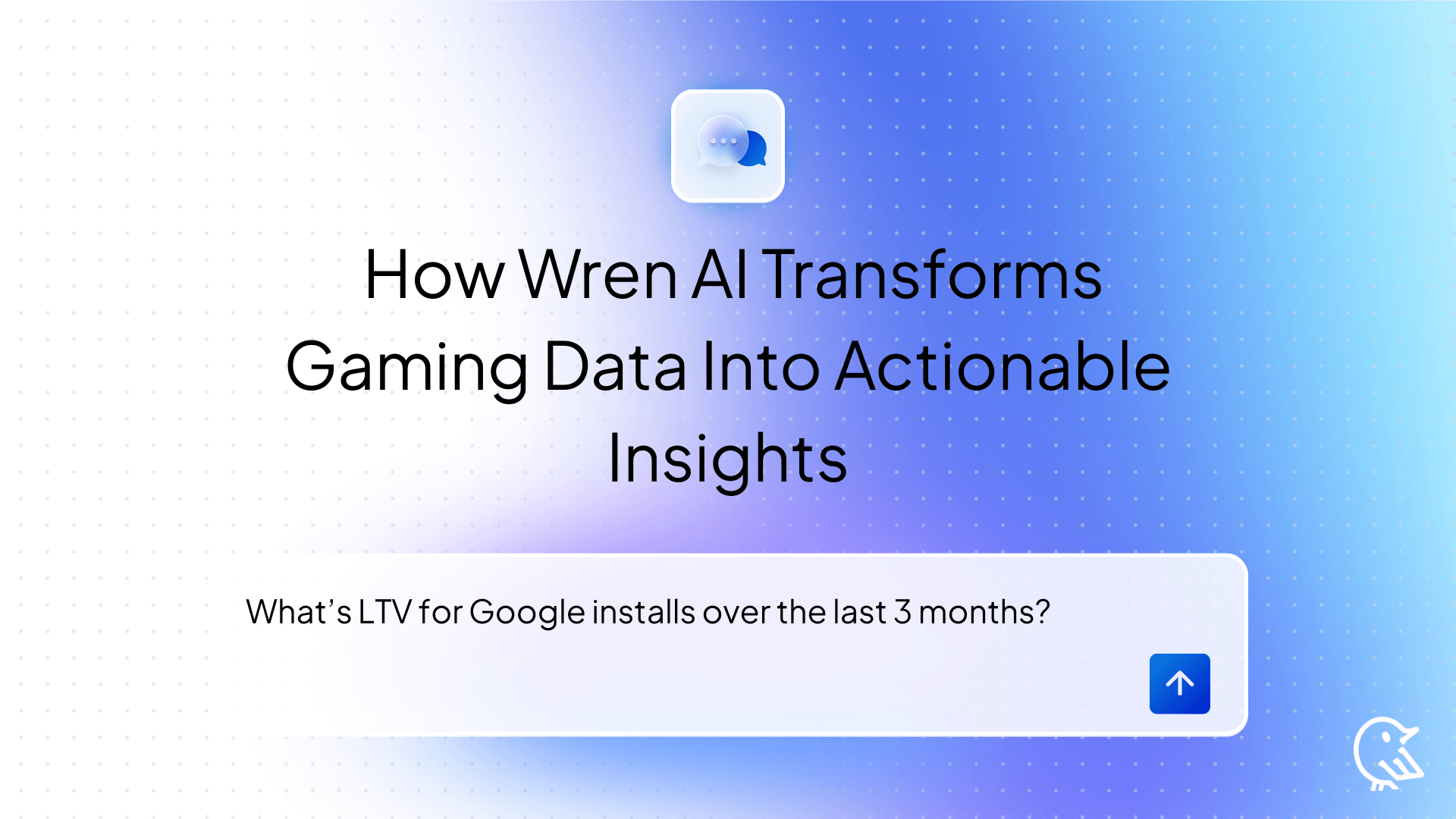
GAME’s ON Unlocking Gaming Analytics How Wren AI Transforms Backend Data Into Actionable Insights
How Wren AI Turns Natural-Language Questions Into Cost-Efficient SQL to Accelerate Insights from Gaming Data
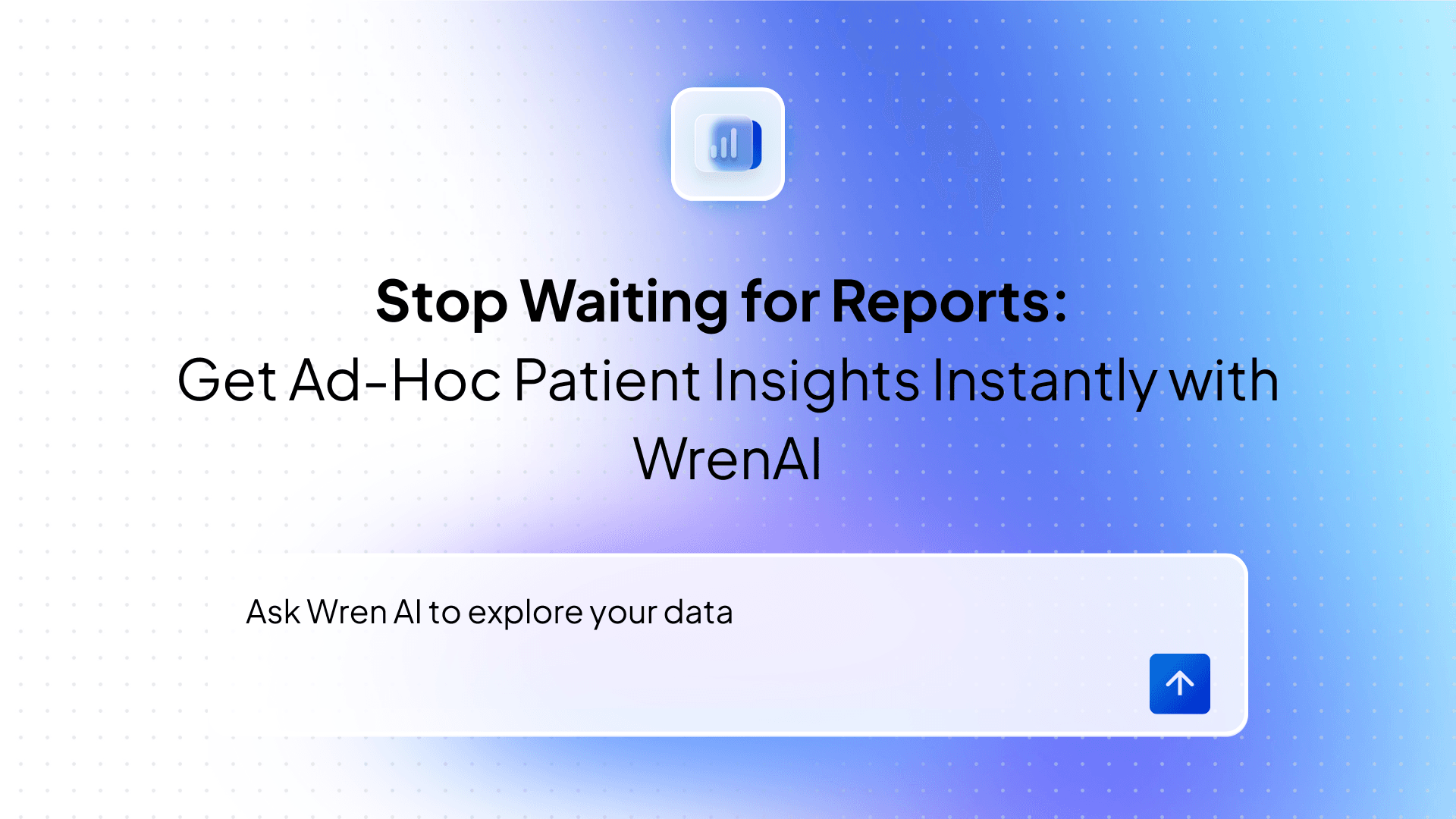
Stop Waiting for Reports: Get Ad-Hoc Patient Insights Instantly with WrenAI
Transform complex medical data into immediate, actionable answers through simple conversational queries, no manual analysis required.

